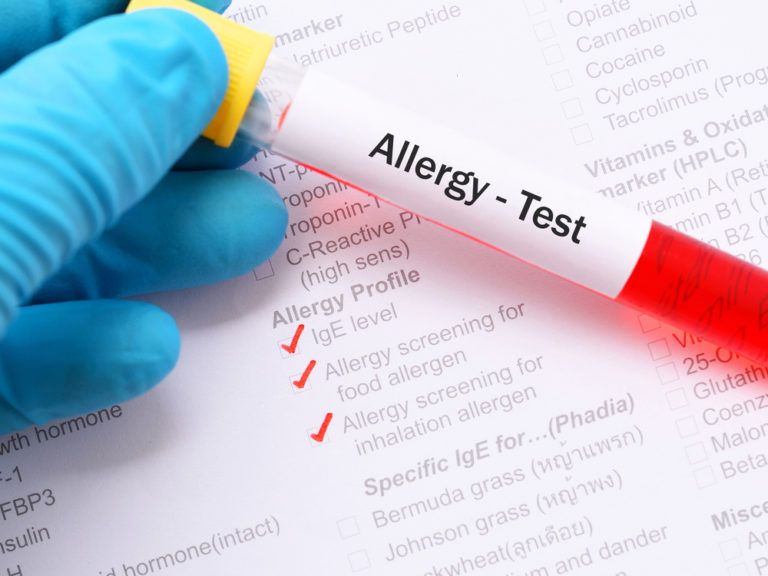Are you dealing with old allergies in this new year and want to find some relief? You aren’t alone. That said, allergy testing can be daunting, and coming to see an allergist in an office is not always convenient. Searching Google, one might come across a variety of alternate testing methods, including food IgG testing, at-home allergy testing kits, applied kinesiology and skin titration.
Unfortunately, while it may seem more convenient to use an alternate testing method, these at-home allergy tests have not been studied to give reliable results. In fact, often times these tests lead to over-diagnosis of a food allergy as well as unnecessary worry and food avoidance.
Allergy Testing 101
With an overabundance of alternative testing online, the most common are IgE tests and IgG tests. IgG testing to foods is not an accurate way to diagnose food allergies, as IgG (or immunoglobulin G) is an antibody produced by the body to any foreign molecule including foods. Positive IgG tests do not translate to clinical reactivity (or allergy). IgE testing, which might be utilized by an allergist in conjunction with skin testing, is an inaccurate screening tool for food allergies. Both of these tests are often falsely positive, making interpretation difficult.
Validated testing to allergies includes skin testing and/or blood testing as ordered through an allergist’s office. Skin testing in an allergist’s office can provide same day results and same day treatment. The testing performed by an allergist is validated, meaning it has been studied in research trials and has conclusive results in the general population.
So if your New Year’s resolution is to determine once and for all if you have an allergy, your best bet is to get an appointment with an allergist and get tested properly.
Category: Uncategorized



